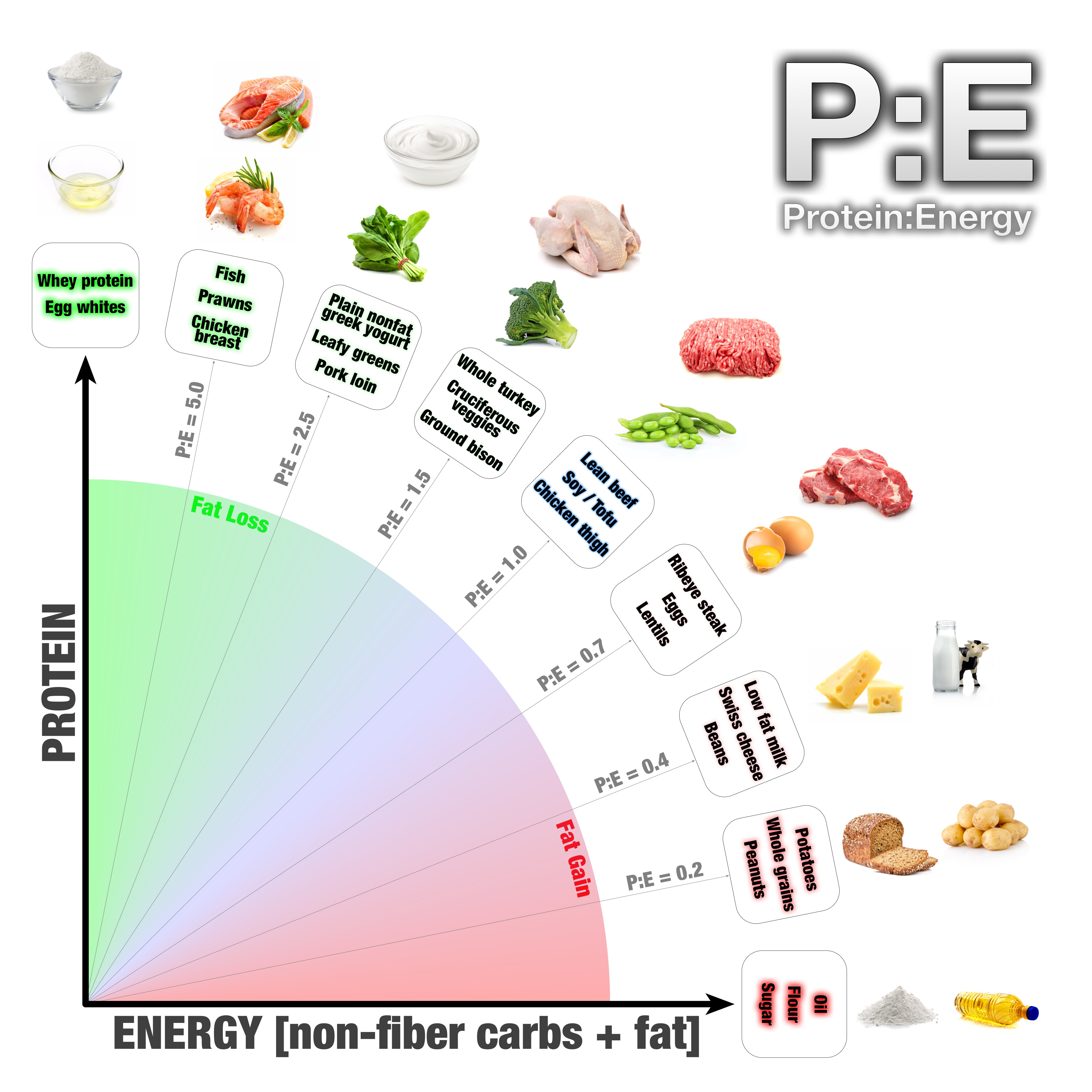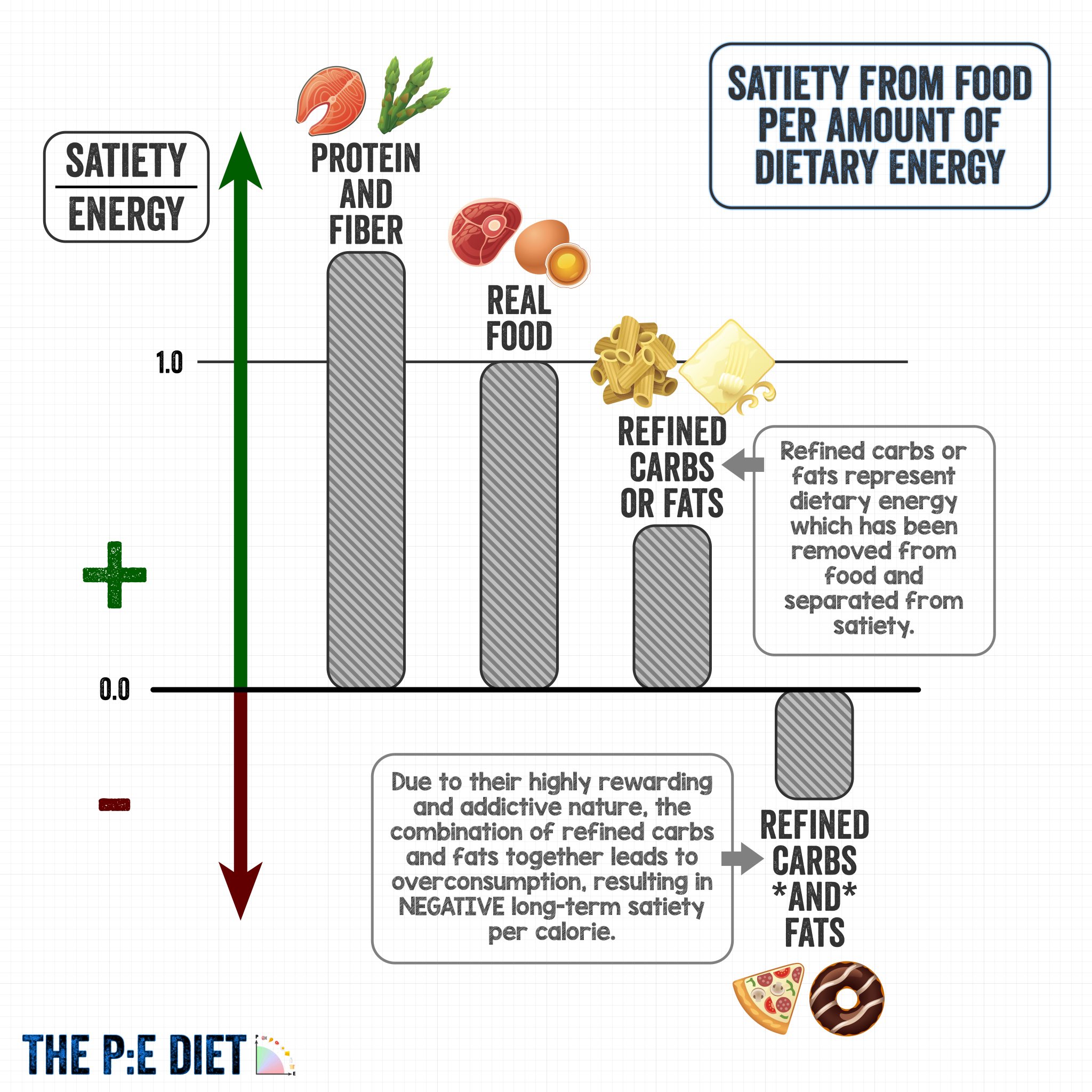The “P:E Diet” approach proposes a detailed consideration of the relationship between protein and energy derived from carbohydrates and fats. This initiative stems from observations by Dr. Ted Naiman, who emphasizes the importance of prioritizing foods with a high protein-to-energy ratio.
The principle of protein leverage is based on the idea that the body aims to meet a daily protein target. A low-protein diet leads to an increase in total food intake, as the body seeks to fulfill its protein requirements.
Dr. Naiman explains that a high-protein-density meal balances satiety signals and reduces the likelihood of overconsuming energy from fats or carbohydrates. Consequently, there is a spontaneous adjustment in the total caloric intake, which makes weight regulation a more intuitive process.

The protein leverage hypothesis is supported by various scientific studies. Additionally, these analyses show that higher protein consumption is associated with lower total caloric intake, due to its strong satiety effects.
The satiety effect of protein stems from its influence on appetite-related hormones, such as leptin and ghrelin. In contrast, low-protein food sources concentrate their energy in less satiating macronutrients, like refined carbohydrates, simple sugars, trans fats, vegetable oils, and other ultra-processed products.
| Less Satiating | More Satiating |
|---|---|
| Refined carbohydrates | Lean meats |
| Simple sugars | Fish |
| Trans fats | Eggs |
| Ultra-processed vegetable oils | Low-fat dairy |
| Ultra-processed foods | Legumes and tofu |
The balance between protein and energy fosters a metabolic environment that supports lean mass preservation (muscles, bones, and organs). This strategy promotes the idea of maintaining a healthier body composition, as protein supports muscle synthesis and other physiological processes.
It also suggests choosing foods with high protein density, such as lean meats, fish, eggs, and low-fat dairy, along with fibrous vegetables and fruit. Each individual can adjust their personal protein-to-carbohydrate ratio based on specific goals and dietary preferences.
Research supporting this approach includes clinical trials and epidemiological studies examining the relationship between protein consumption and weight management. These findings suggest that diets higher in protein are associated with better metabolic health markers, due to improved glycemic control and reduced appetite.
Most humans eat around four pounds of food a day, somewhat independent of calories. Eating foods with more protein, fiber, and water allows you to have higher satiety per calorie and eat fewer calories. This might a small effect, but definitely useful.

Strength training increases protein demand for muscle recovery
Strength training and physical activity, in general, act as complementary factors in this context, as they increase the protein demand for muscle recovery. Additionally, the combination of exercise and a high-protein diet enhances body composition and supports an energy balance better tailored to individual needs.
The P:E approach encourages a focus on food quality. It is our responsibility to make conscious food choices, aiming for high protein density to increase satiety and help achieve more intuitive caloric control.
Rosurces: P:E Diet calculator
